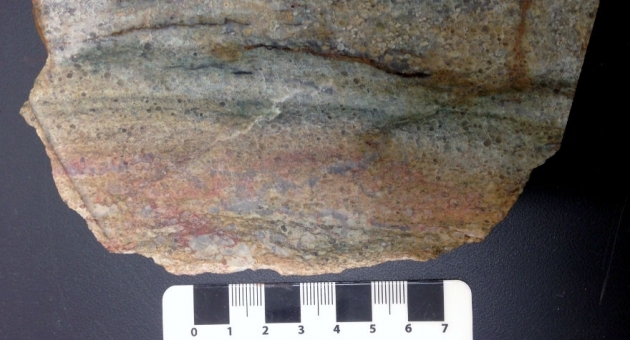Researchers unearth earliest evidence of plate tectonics

Rock unearthed from a mountain belt in northeastern South Africa has shown the earliest known evidence of plate tectonics, pre-dating their previous known existence by 240 million years, according to researchers.
Led by Alexandra Krull-Davatzes, assistant professor of earth and environmental science at Temple University, the researchers published their findings, “Paleoarchean ocean crust and mantle excavated by meteor impact: Insight into early crustal processes and tectonics,” in the July issue of the journal, Geology.
Plate tectonics is a geological process by which massive, irregularly shaped slabs of rock that comprise the Earth’s outer shell, shift and move over time to form continents, mountains, rivers, oceans and the planet’s other geological features.
“We know we have plate tectonics now, but we don’t know how or when it started,” said Krull-Davatzes, who studies the Archean Earth, an early period in the Earth’s history ranging from 2.5-4 billion years ago.
Krull-Davatzes said that the rare rock she unearthed was created by a large meteor—at least three times bigger than the meteor that killed the dinosaurs—that impacted the Earth at a spot that was then the Archean ocean; plunging deep into the ocean’s crust and the Earth’s mantle.
“Once the meteor hit, it vaporized the rock in the Earth’s crust and mantle and spread it out into the atmosphere like a large plume from a volcano,” she said. “The vaporized rock then re-condensed and fell like rock hail creating a global layer across the Earth’s surface.”
Krull-Davatzes said that modeling of rare rock’s composition demonstrated that it is a perfect match to the composition of today’s ocean crust and mantle. She said the unearthed rock could have only been formed if plate tectonics had been active during that time.
“There’s a lot of controversy over whether plate tectonics was taking place during the Archean period,” she said, pointing out that there had previously only been confirmed evidence of plate tectonics occurring three billion years ago. “The composition of this rock definitely shows that the Earth’s crust was starting to differentiate and that plate tectonics was active very earlier than we expected, pushing it back 240 million years earlier.
“The other interesting part is that the way the rock’s mantle material is composed means that continents had to have formed on the surface of the Earth at this time, but we don’t see any evidence of the meteor hitting continental material on its impact,” Krull-Davatzes said.
Krull-Davatzes collaborated on this research with Gary R. Byerly, Alumni Professor of Geology and Dean of the Graduate School at Louisiana State University, and Donald Lowe, Max Steineke Professor in Earth Sciences at Stanford University.
The research was funded through a National Science Foundation grant.